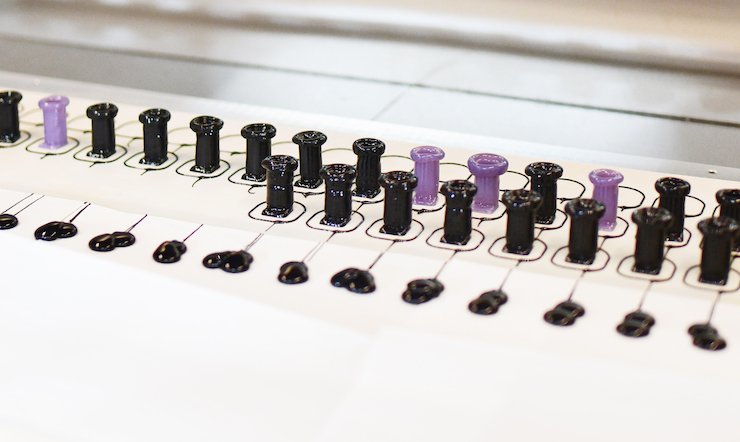
Chromatic 3D Materials, a 3D printing materials and technology provider, has passed 14 CFR vertical burn tests – which demonstrate compliance with anti-flammability standards for airworthiness. Chromatic’s durable, abrasion-resistant thermoset polyurethanes are suitable for a wide variety of airline parts, including elastomeric components used in stowage compartments and decorative panels, as well as ductwork, cargo liners, fabric sealing, and many other applications.
Having met these crucial requirements, Chromatic can now offer the aerospace market the benefits of its RX-AM materials and technology platform for additive manufacturing. These benefits include low tooling costs for low- and medium-volume manufacturing, as well as cost-effective prototyping and high-mix production. In addition to this, RX-AM makes it possible to produce high-quality components with limited material stock – allowing aerospace companies to print parts on demand, outside of traditional manufacturing environments.
“Additive manufacturing can revolutionize product design and supply chains – and it all starts with the type of materials that are available. The aviation industry has some of the most stringent materials requirements, and we are pleased that test results from the National Institute for Aviation Research prove Chromatic’s materials pass with flying colors. We’re confident that our industrial-strength polyurethanes will open doors for 3D printed applications in aviation as well as other industries that require safe, flame-resistant materials, including automotive, furniture, and apparel,” said Dr. Cora Leibig, Founder and CEO of Chromatic.
Subscribe to AM Chronicle Newsletter to stay connected: https://bit.ly/3fBZ1mP
Follow us on LinkedIn: https://bit.ly/3IjhrFq
Visit for more interesting content on additive manufacturing: https://amchronicle.com
Building on their established successes in India and the USA, EOS and Phillips Machine Tools…
CPAC, a subsidiary of SCG, has entered into a significant partnership with SAMSUNG E&A to…
A research team from Graz University of Technology (TU Graz) in Austria has introduced two…
Aircraft maintenance plays a critical role in today's aviation industry, especially given the current challenges…
Calum Stewart Calum Stewart, a leading figure at SPEE3D, has been at the forefront of…
The Vice President of Rolf Mack at KraussMaffei talks about the future vision of Additive…
This website uses cookies.